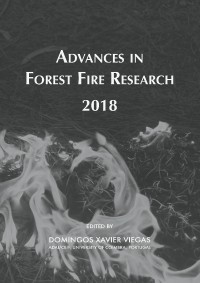Please use this identifier to cite or link to this item:
https://hdl.handle.net/10316.2/44641| Title: | Wildfires: web application concept and prototype | Authors: | Nieves, Sandra Mordvinova, Olga |
Keywords: | forest fires;fire science;geo science;design thinking;data visualization;user experience design;artificial intelligence;data science;geo informatics;software engineering | Issue Date: | 2018 | Publisher: | Imprensa da Universidade de Coimbra | Journal: | http://hdl.handle.net/10316.2/44517 | Abstract: | In 2016 there were 50,653 wildfires in Europe, which destroyed 352,729 hectares of land – about the size of 490,000 soccer fields. 46% of all land destroyed was in Portugal (European Commission, 2016). That amounts to 161,522ha (Figure 1). According to the news, the fire around Pedrógão Grande, Portugal in June 2017 caused losses that are estimated to be €497 mil., plus €300 mil. for future prevention. In this one fire, 481 houses burnt, 374 people lost their jobs, 45ha of land were destroyed and 64 people died (ECO News, 2017). By October 2017 fires in Portugal have already burnt 520,000ha (abc Net, 2017). Fires have had a tremendous impact on people, especially in Southern Europe. People living in rural areas, are often on their own to protect themselves. Unfortunately, following one’s gut feeling might not be the best choice. Last year in Portugal, most people died on the roads, when trying to escape the flames. We conducted qualitative research which revealed, that there is a lack of reliable, current and contextual information available to people, that can support good decisions during fire emergencies. There is an abundance of quantitative research coming out of the fire science and geo science community, that has explored the topic, and scientists have discussed and evaluated data driven- and artificial intelligence approaches to predict fire behavior and fire danger. However, we did not find a solution that applies insights from qualitative research and knowledge from quantitative studies in form of a practical web application, that can be intuitively used by people in affected areas. In this paper, we illustrate how design thinking – a process for creative problem solving, can bring together technology and science with needs of people, and to create a solution that enables them to make better decisions related to forest fires. | URI: | https://hdl.handle.net/10316.2/44641 | ISBN: | 978-989-26-16-506 (PDF) | DOI: | 10.14195/978-989-26-16-506_124 | Rights: | open access |
| Appears in Collections: | Advances in forest fire research 2018 |
Files in This Item:
| File | Description | Size | Format | |
|---|---|---|---|---|
| wildfires__web_application_concept.pdf | 1.33 MB | Adobe PDF |  |
Items in DSpace are protected by copyright, with all rights reserved, unless otherwise indicated.
